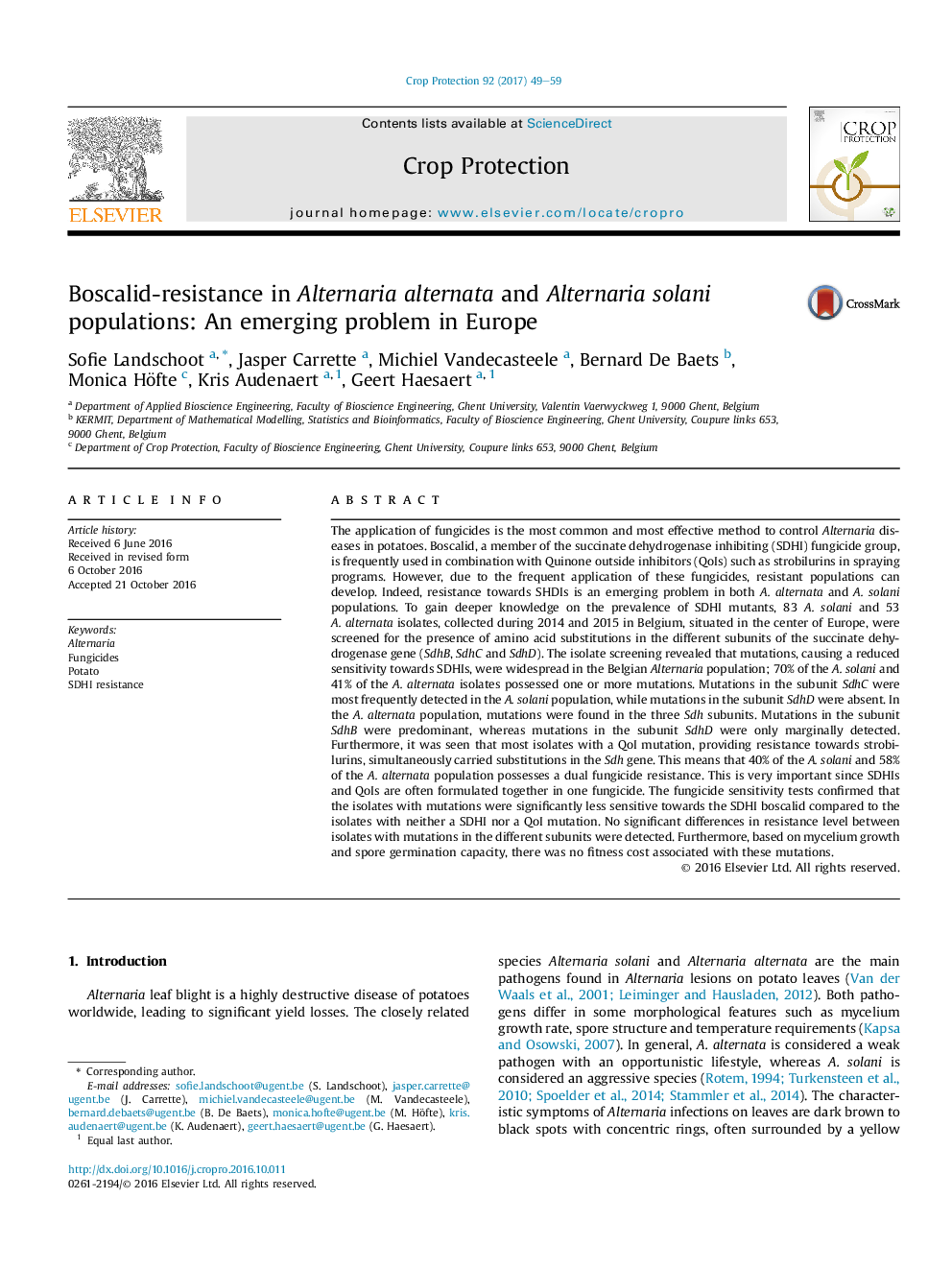| Article ID | Journal | Published Year | Pages | File Type |
|---|---|---|---|---|
| 4505507 | Crop Protection | 2017 | 11 Pages |
•Resistance towards SHDIs is an emerging problem in both A. alternata and A. solani populations.•Eighty-three A. solani and 53 A. alternata isolates, were screened for the presence of mutations leading to SDHI resistance.•70% of the A. solani and 41% of the A. alternata isolates possessed one or more SDHI mutations.•40% of the A. solani and 58% of the A. alternata population possesses a dual fungicide resistance against QoIs and SDHIs.•Based on mycelium growth and spore germination capacity, there was no fitness cost associated with these mutations.
The application of fungicides is the most common and most effective method to control Alternaria diseases in potatoes. Boscalid, a member of the succinate dehydrogenase inhibiting (SDHI) fungicide group, is frequently used in combination with Quinone outside inhibitors (QoIs) such as strobilurins in spraying programs. However, due to the frequent application of these fungicides, resistant populations can develop. Indeed, resistance towards SHDIs is an emerging problem in both A. alternata and A. solani populations. To gain deeper knowledge on the prevalence of SDHI mutants, 83 A. solani and 53 A. alternata isolates, collected during 2014 and 2015 in Belgium, situated in the center of Europe, were screened for the presence of amino acid substitutions in the different subunits of the succinate dehydrogenase gene (SdhB, SdhC and SdhD). The isolate screening revealed that mutations, causing a reduced sensitivity towards SDHIs, were widespread in the Belgian Alternaria population; 70% of the A. solani and 41% of the A. alternata isolates possessed one or more mutations. Mutations in the subunit SdhC were most frequently detected in the A. solani population, while mutations in the subunit SdhD were absent. In the A. alternata population, mutations were found in the three Sdh subunits. Mutations in the subunit SdhB were predominant, whereas mutations in the subunit SdhD were only marginally detected. Furthermore, it was seen that most isolates with a QoI mutation, providing resistance towards strobilurins, simultaneously carried substitutions in the Sdh gene. This means that 40% of the A. solani and 58% of the A. alternata population possesses a dual fungicide resistance. This is very important since SDHIs and QoIs are often formulated together in one fungicide. The fungicide sensitivity tests confirmed that the isolates with mutations were significantly less sensitive towards the SDHI boscalid compared to the isolates with neither a SDHI nor a QoI mutation. No significant differences in resistance level between isolates with mutations in the different subunits were detected. Furthermore, based on mycelium growth and spore germination capacity, there was no fitness cost associated with these mutations.
